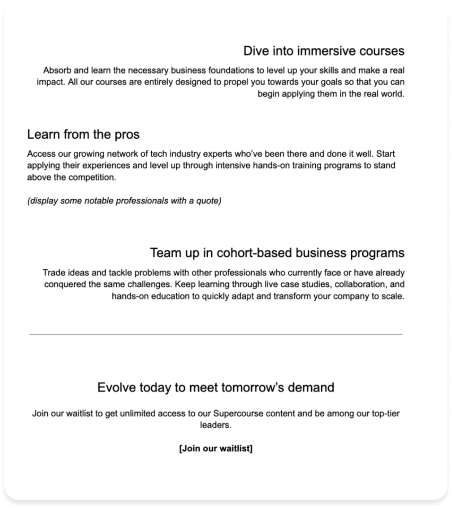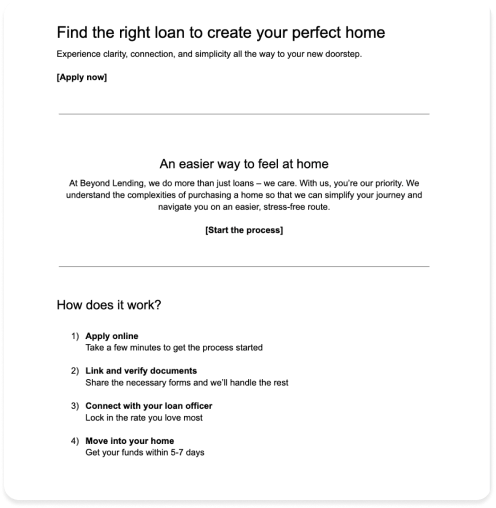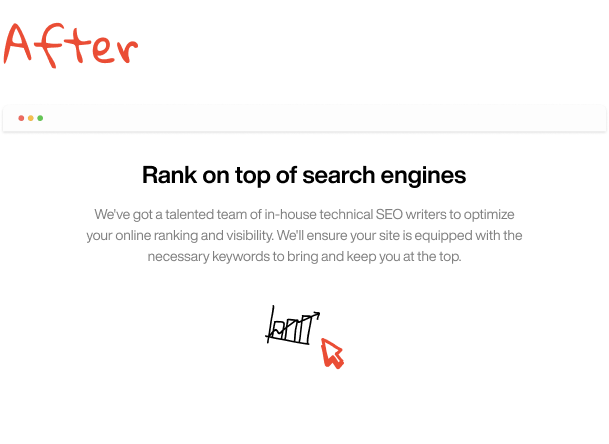Copywriting

Writing for different startups, lone CEOs, and global corporations helped me to get familiar with a range of industries, tones and voices.


Writing for different startups, lone CEOs, and global corporations helped me to get familiar with a range of industries, tones and voices.


Who are you targeting? How do they speak? What do they need to hear about your product to trust and need it?
What’s your space like? Do you already have a design template? What tools can we collaborate in?
What are your constraints and must haves? What are your key messages? What makes you stand out?
What can I absorb? Throw as much information to me as possible. The more I can digest, the more accurate I can write – don’t worry about complexity.
How can we simplify? I untangle and extract the core messages to ensure that it’s clearly heard, written in a way that even your grandmother can understand.
Incorporating search optimization (SEO) keywords while following the tone and voice for every client I work with.


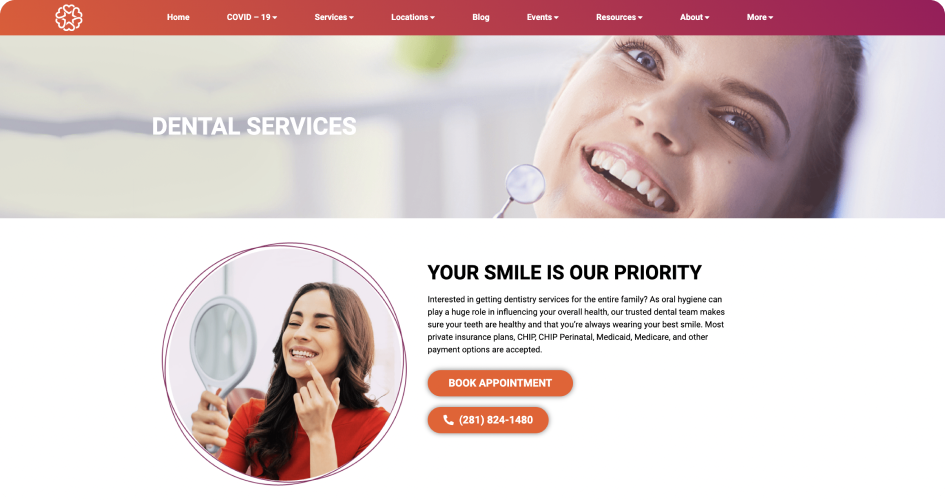


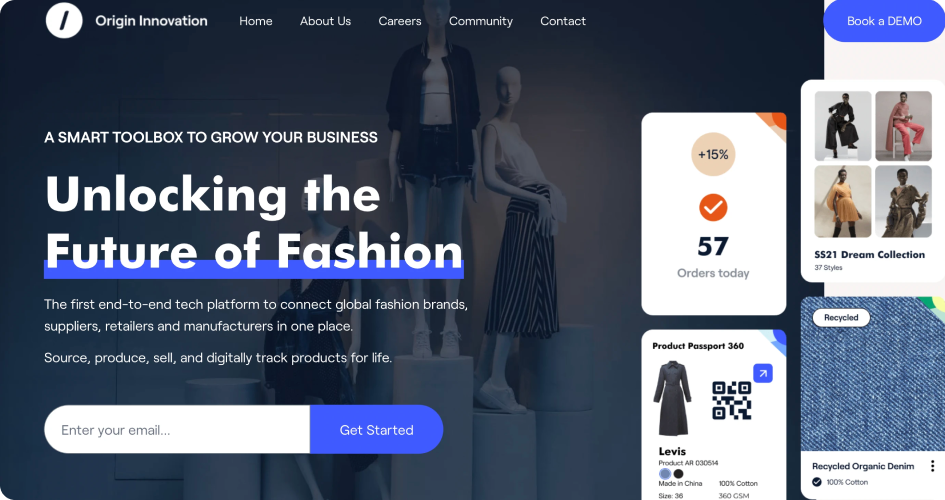


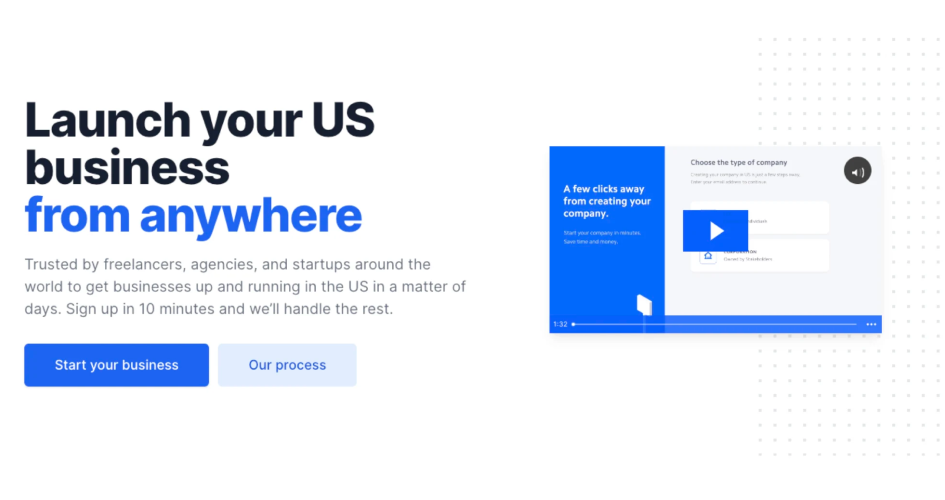

Just a few copywriting examples prior to design – sometimes clients prefer an overall written structure with visual content hiearchy before tackling the designs.
